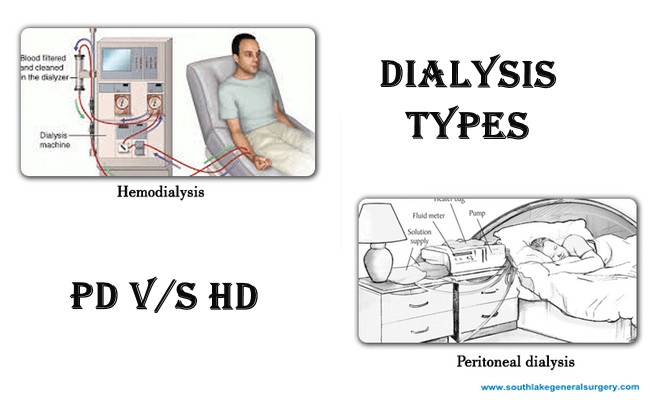The patient suffering from last stage renal disease needs to go for dialysis to carry out the filtering of blood. Sometimes, patients are not fit for kidney transplantation that made dialysis to be important and the appropriate treatment option available for them.
Types of Dialysis
The patient has a choice to either choose from the following dialysis option:
- Peritoneal Dialysis (PD)
- Hemodialysis (HD)
Peritoneal dialysis and hemodialysis both are an effective option in the case of last stage renal-disease. Often the major question that people face is to choose one over the other.
Here are the factors that can influence your decision of choosing dialysis option:
- patient motivation
- geographic distance from an HD unit
- physician and/or nurse bias
- patient education
What is the Peritoneal Dialysis?
In peritoneal dialysis, the lining of the abdomen is use to filter the blood inside the patient who is suffering from kidney failure, the lining of the abdomen is known as peritoneum.
To carry on the peritoneal dialysis the surgeon places a soft tube, called a catheter in the patient belly. The treatment starts with a dialysis solution that includes passing water with salts and other additives from the bag through the catheter into the belly. As soon as the bag becomes empty, the surgeon disconnects the bag and closes the catheter by putting a cap on it. You can move around after the cap is been placed on the catheter and do your normal activity. Meanwhile, the dialysis solution will work to absorb wastes and extra fluid inside your body
Peritoneal catheter surgery complications
Peritoneal catheter surgery complications can be categorize into the following:
- early complications
- late complications
List of Early complication-
- Bleeding
- Perforations
- Leaks
- Healing
- Obstruction
- Infections
- Hernia
- Hydrothorax
- Genital Edema
However, not all cases will result in a complication. The complication of peritoneal dialysis can be prevented by taking care of following things-
- Evaluation of patient health condition
- Precisely performing implantation technique
- Careful monitoring of patient post-surgery
Complications of Placing Permanent peritoneal catheter for Dialysis
Infusion pain
Pain can be a result of the following:
- Irritation caused by catheter tip resting against the pelvic wall.
- Rapid infusion of solution from the jet
- Irritation due to chemical or physical causes.
Peritonitis
It is the condition of inflammation of the peritoneum. The peritoneum is the abdominal lining through which the catheter is placed. The peritoneum is a membrane that covers the internal abdominal organ. Inflammation can be a result of bacterial or fungal infection or rupture in your abdomen.
Perforation
Perforation can be a result of pressure during necrosis. Perforation can happen in bowel, bladder and pelvic wall. The perforation can also lead catheter to project into the anus. To treat perforation the catheter needs to removed, furthermore, the treatment includes the repairing of the fistulous tract. In some cases, the patient may be rest from peritoneal dialysis.
Herniae
Patients on peritoneal dialysis are often at risk of developing a hernia. According to the reports, the risk of hernia increases by up to 20% after 1 year of initiation of peritoneal surgery.
Hemoperitoneum
Hemoperitoneum occurs due to tugging and pulling of catheter resulting in the bleeding from the anterior abdominal wall.

